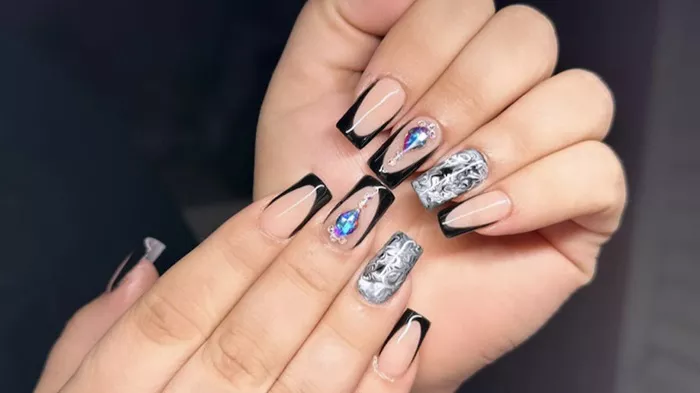Celebrities like Kylie Jenner, Rihanna, Ariana Grande, and Cardi B flaunt their glamorous, embellished acrylic nails as a style statement. The nail fashion industry has boomed, with gel manicures and acrylic nails dominating current trends. Despite their aesthetic appeal, these manicures pose significant health risks to natural nails and can even lead to unexpected health issues for some individuals.
The nail glue used to attach acrylics contains a mixture of alcohol, cyanoacrylate, and photo-bonded methacrylate, along with formaldehyde, a known carcinogen. These chemicals often cause skin irritation and dermatitis, and incidents of nail glue burns are not uncommon. Spilled glue can even burn through fabric, damaging the skin beneath and potentially leading to infection.
Extended wear of gels and acrylics can result in pseudo-psoriatic nails, characterized by the growth of extra skin (hyperkeratosis) under the nail, mimicking the red, crusty appearance of psoriasis. Many affected individuals test positive for an allergy to methyl methacrylate, which in severe cases can lead to permanent nail loss or peripheral neuropathy, causing tingling or numbness in the fingers.
Furthermore, there have been reported cases linking UV nail lamps used for curing gel nails to an increased risk of skin cancer. These lamps emit UVA rays that harden the gel, but frequent exposure during regular manicure sessions significantly increases UVA exposure to the hands, which are often unprotected by clothing and sunscreen.
To mitigate UV exposure risks, experts recommend applying a high-factor sunscreen at least 30 minutes before a manicure appointment and wearing dark, fingerless gloves during the curing process.
The removal process of gels and acrylics involves peeling or shaving away fragments of the nail plate, which can damage the keratin layers of the nail and make it brittle. Chemicals used in removal, such as acetone for gel nails, can further dry out the nails and surrounding skin, potentially entering the bloodstream.
Overfiling during removal can cause damage to the nail’s keratin layers and capillaries underneath, leading to visible changes in the nail’s appearance, such as pseudoleukonychia (white spots). Traumatic onycholysis, where the nail separates from the nail bed, and paronychia, an infection at the edges of the nail, are also risks associated with prolonged use of false nails.
Moisture buildup under false nails creates an ideal environment for fungal infections (onychomycosis), which can progress unnoticed due to the cosmetic covering of acrylics.
Even traditional nail varnish poses risks; it can alter pulse oximeter readings, though typically not to a clinically significant degree. In clinical settings, gels, acrylics, and varnish are prohibited due to the potential for bacterial growth under nails and in polish chips, which can be transmitted between staff and patients.
Considering these risks, experts advise prioritizing natural nail care over the use of gels and acrylics. Keeping nails visible allows for the early detection of health issues, including fungal infections and potentially serious conditions like heart disease.
In conclusion, while gel manicures and acrylic nails enhance aesthetic appeal, they entail significant health risks that individuals should weigh carefully before opting for these trendy nail treatments.
Related topics:
- WHO and University of Katyavala Bwila Forge Partnership to Boost Health Initiatives in Angola
- Legal Implications Loom for Covishield Over Alleged Health Risks
- Air Travel Health Risks and Precautions: Insights from an Infectious Disease Expert


